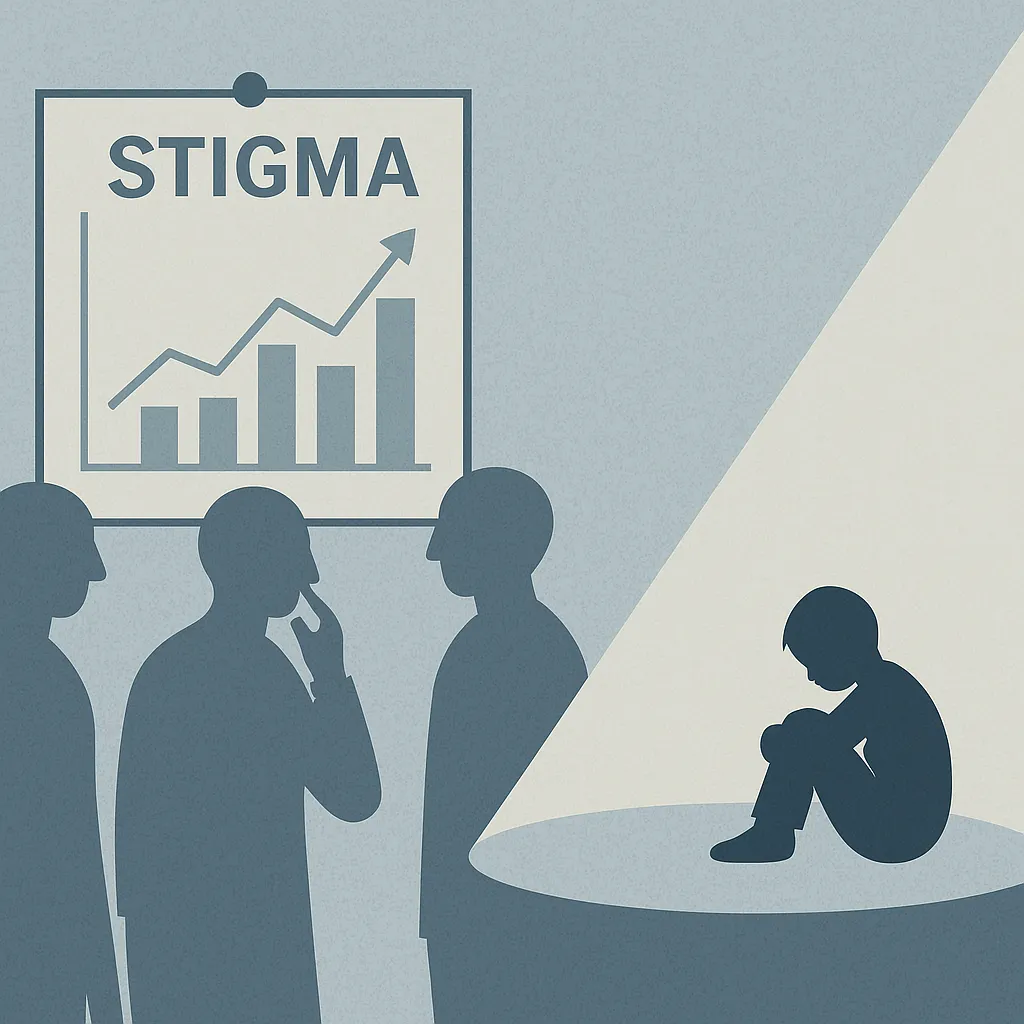When “Stigma” Becomes a Sidestep: Reading the Vietnamese Autism Study Between the Lines
 A new paper from Hanoi Medical University, titled "Stigma and Its Related Factors Among Caregivers of Children with Autism Spectrum Disorder in Vietnam", surveys 846 Vietnamese parents of autistic children. The goal? To measure three kinds of stigma — perceived, internalized and enacted — and trace how they relate to caregiver burden, mental health, child “severity,” family support and more.
A new paper from Hanoi Medical University, titled "Stigma and Its Related Factors Among Caregivers of Children with Autism Spectrum Disorder in Vietnam", surveys 846 Vietnamese parents of autistic children. The goal? To measure three kinds of stigma — perceived, internalized and enacted — and trace how they relate to caregiver burden, mental health, child “severity,” family support and more.
The findings are clear, but familiar:
The more overwhelmed a caregiver feels, the more stigma they report.
Self-stigma in particular tracks strongly with caregiver burden.
Economic hardship and lack of support worsen the picture.
None of that surprised me.
What did surprise me — though maybe it shouldn’t — was the silence around the people we’re supposedly here for.
Autistic children don’t appear in this study except as stressors.
We are variables. Inputs. Severity scores.
Not voices.
What gets measured — and what gets erased
Let’s name what this research does well:
It captures a wide swath of parent experience, and it tries to be culturally grounded.
It flags Vietnam’s still-pervasive beliefs that autism is a “disease,” a curse, or karmic punishment.
It names how social shame (“losing face”) limits support.
But after identifying those dynamics, the authors pivot back to the familiar script:
Interventions should focus on “personalized care” for caregivers. Reduce stress. Improve sleep. Address family conflicts.
In other words: make parents feel better.
But don’t change the systems harming them.
And don’t ask autistic people what we’d change.
When the “solution” is empathy without equity
Here’s the risk: by centering only the parent’s psychological response, stigma becomes a private pain. Not a public injustice.
- Instead of confronting exclusion, researchers document its effects.
- Instead of platforming autistic agency, they log the fallout when that agency is denied.
The child becomes a trigger for burden — not a subject in their own right.
This isn’t just about representation.
It’s about power.
When a study frames autistic children as the cause of stigma, instead of co-sufferers — or resistors — of it, it reinforces the idea that our existence is inherently tragic, costly or shameful.
And when autistic Vietnamese voices aren’t included at all — not in interviews, not in quotes, not in co-authorship — that absence doesn’t just reflect marginalization.
It reproduces it.
What narrative could have been told?
Imagine if this paper had asked a different set of questions:
- How do autistic children in Vietnam experience social rejection or shame?
- What do they understand about “burden” when they hear their parents use the word?
- What cultural or spiritual frameworks do autistic Vietnamese people use to make sense of who they are?
We don’t get that story.
Not here.
Not yet.
Burden as a frame — and a diversion
Let’s not pretend caregiver burden isn’t real. It is.
And it’s compounded by poverty, stigma, inaccessible services and isolation.
But when burden becomes the primary lens, autistic people get reduced to load-bearing weights in someone else’s narrative.
The logic becomes:
Help the parent. Lighten the load.
But don’t ask whether the system ever needed to place that weight on anyone’s back.
And don’t ask how autistic people carry a different kind of burden —
of being seen only as the source of stress, never the subject of solidarity.
What “stigma” hides — and what it could reveal
The word stigma once referred to literal wounds.
Today, it’s mostly used in research as a social force: internalized shame, fear of judgment, exclusion.
But stigma isn’t just a feeling.
It’s a signal. A social sorting mechanism.
It tells us whose behavior is allowed to be messy, and whose difference is marked as a threat.
It tells us who gets protected — and who gets pathologized.
In that sense, studies like this one miss the point when they treat stigma like a psychological residue.
Stigma isn’t what happens after a culture fails you. It is the failure.
Systematized. Sanitized. Reframed as “burden.”
A different future demands a different research frame
We don’t need researchers to pity parents or fix autistic people.
We need them to follow autistic people — and families — into the places where stigma begins: language, institutions, norms.
We need them to document harm without flattening those harmed.
And we need to stop asking only what parents feel — and start asking what autistic people know.
Because we’ve known for a long time:
Stigma isn’t a side effect.
It’s the system.
And we’ve already imagined something better.
Let us in.